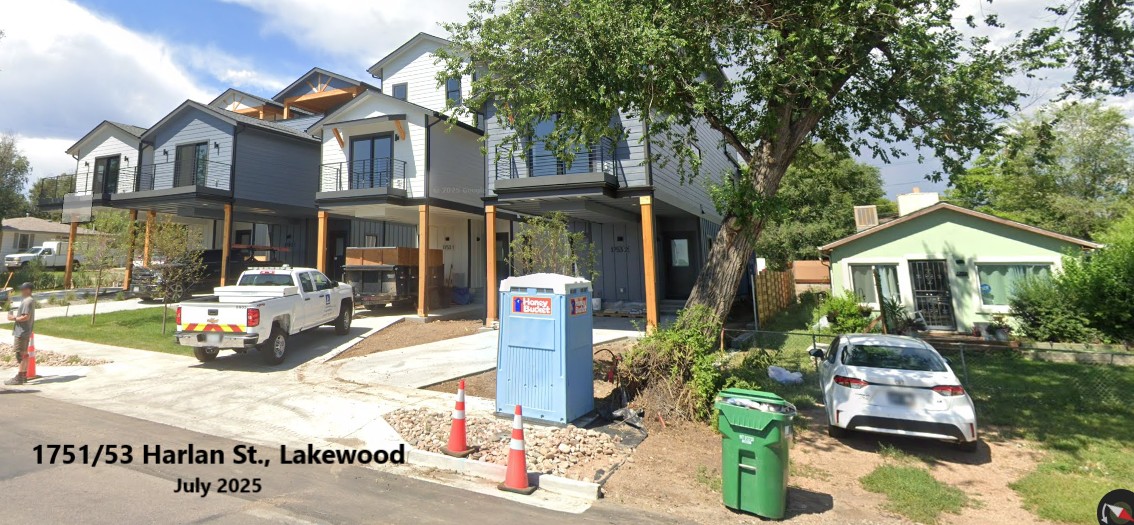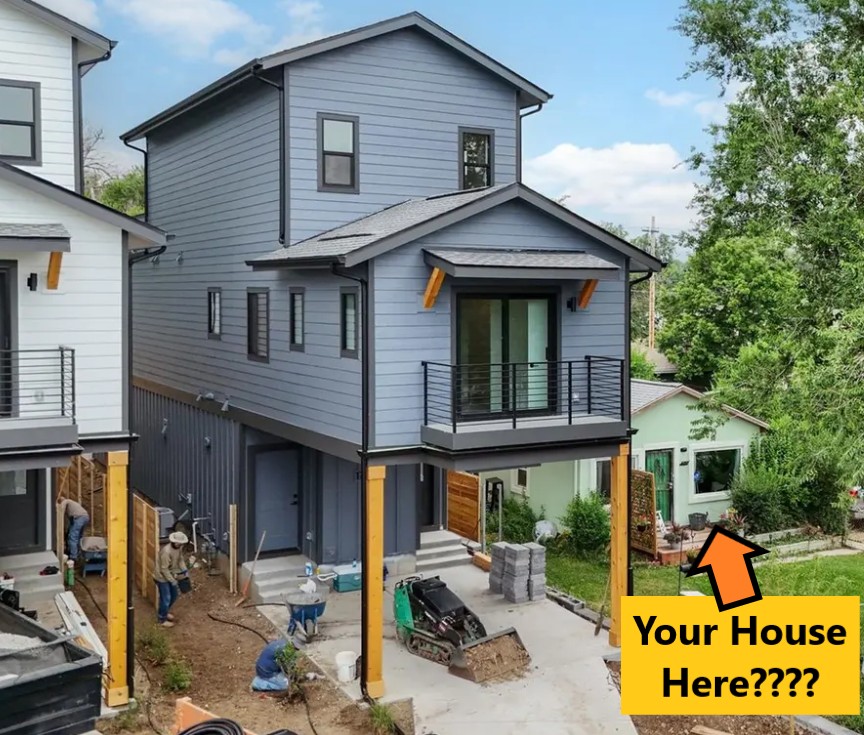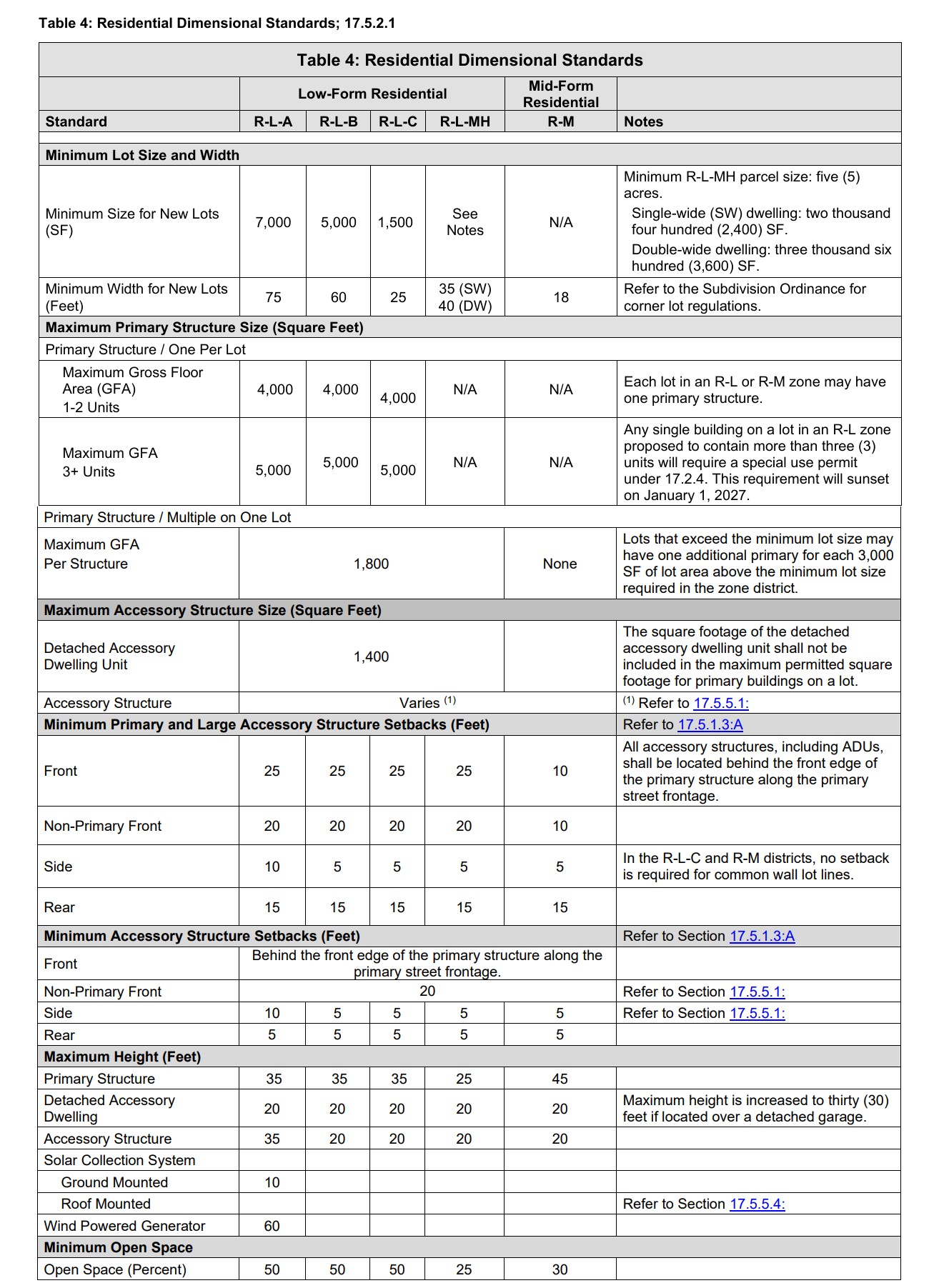Lakewood Zoning Ordinance 2025
Please sign the petition - Let voters decide
The new Lakewood Zoning ordinance has been passed by the City Council, but there is one last opportunity to stop it. We must act quickly.
A group of Lakewood citizens is collecting signatures on petitions to give Lakewood voters the opportunity to decide whether they want to eliminate single-family neighborhoods in the city by allowing developers to build multi-family housing on any lot in any neighborhood. Those buildings can be 35 feet tall and 5,000 square feet, even next to one-story houses. And buildings less than 4,000 sq. ft. can be built with NO PARKING, so all parking would be on the street.
The petition office has closed. Click Here for current signing locations.
What's at stake
Your house and your neighborhood were rezoned by the City on Oct. 13 without you being notified. A developer can now buy your neighbor's house, scrape it, then build as many housing units that will fit under the new, generous, building standards. It could be one 35-ft-tall building of 4,000 or 5,000 sq. ft. with multiple housing units. Or the property can be subdivided into multiple lots with a home built on each. Here's an example of what it could look like with new construction towering over existing houses, disrupting lives, forever changing the character of the neighborhood, and filling the street with parked cars.
This is what Lakewood approved just last year at 1751/53 Harlan St. Under the new zoning ordinance, this is the kind of housing that will be allowed in neighborhoods around the city.
Below Left: A developer purchased this house and vacant lot for less than $400,000 each in 2019.
Below right: The developer built these four houses. They went on the market this month at a price of $1 MILLION EACH. Turning a $400,000 house into two $1,000,000 houses does not make housing in Lakewood more affordable. And it permanently damages our great neighborhoods.
The new zoning ordinance goes into effect in December unless enough signatures are collected this month to force an election. After that, the kind of housing you see in Denver and Edgewater will come to Lakewood.
Overview of New Zoning Ordinance
In August, the Lakewood City Council ignored massive citizen opposition to approve a new zoning ordinance that will devastate neighborhoods throughout the city. Under the new ordinance, neighborhoods that are currently zoned for single-family homes and duplexes will all be rezoned to allow multiple homes on all properties. A developer may purchase any lot in a neighborhood, scrape the existing house, and construct a new building that is 35-feet tall with five, 1,000 sq. ft. townhomes.
The new zone districts are R-L-A, R-L-B and R-L-C, with R-L-C allowing the most density. On Monday, Oct. 13, the city council approved a new zoning map that designated all of Mountain View as R-L-B. Most of Daniels Gardens is R-L-A. We tried to get all of Daniels Gardens designated R-L-A, but the properties on W. Independence, W. 14th Ave. and W. Security Ave. are designated R-L-C due to the smaller size of the lots and their proximity to Colfax.
Neighborhood Zone Districts
(Language from new Lakewood Zoning Ordinance)
- R-L-A: This zone district is intended to support incremental development that aligns with the City’s rural character. Development primarily consists of mostly small residential dwellings on large lots. Consistent with low-form residential areas, this zone district allows housing options that reinforce the rural landscape while allowing a variety of housing options beyond single-unit homes.
- R-L-B: This zone district is intended to maintain the residential character of traditional suburban neighborhoods, while expanding the range of housing options available. Development primarily consists of small residential dwellings on medium to large-sized lots. The shape of a typical lot varies widely and may be square, trapezoidal, rectangular, or irregular. This zone district allows for multiple units with a single house-scale building, and on larger lots, multiple house-scale buildings on a lot.
- R-L-C: This zone district is intended to support compact, walkable neighborhoods with a range of housing options. Development includes small-scale attached and detached housing, and lots are typically deeper than they are wide. This zone district controls the building form over the number of units, allowing for gentle density increases without drastic changes to the neighborhood scale.
Building Standards
NOTE: The new standards are confusing and the city has distributed misinformation about what they mean. If you believe any of the information on this webpage is inaccurate, please send an email to the address at the bottom of the page.
Link to full standards - approved in August (Article 5 - starts on page 97)
Here's what the standards mean.
- Minimum Lot Size and Width - A developer can purchase an existing home and subdivide the lot into individual parcels as long as they meet the minimum size standards below. In R-L-C districts, each subdivided lot would have to be at least 1,500 sq. ft. and 25 feet wide. A home could then be built on each lot. (An acre is 43,560 sq. ft.) Both R-L-A and R-L-B require larger minimum lot sizes and widths, making it more difficult to subdivide properties.
- Maximum Primary Structure Size - The "primary structure" is the house. In all of the R-L districts, a developer can buy a house and replace it with a building with multiple units. If it's a duplex, the maximum gross floor area is 4,000 square feet. if the building is divided into three or more dwelling units, the maximum GFA rises to 5,000 sq. ft.
- Maximum Accessory Structure Size - An accessory structure is either an ADU - basically a small house - or a shed or detached garage.
- Maximum Height - The main building on any lot can be up to 35 feet tall. The new ordinance, to comply with state law, allows an ADU (accessory dwelling unit) on any residential lot. ADUs are limited to a height of 20 feet.
- Minimum Open Space - There is a requirement that 50% of the lot be "open space." But the definition of open space appears to have loopholes. (We're trying to get some clarification of what that means.)
Email us at danielswelchester@gmail.com
©2025 Daniels Welchester Neighborhood Association




